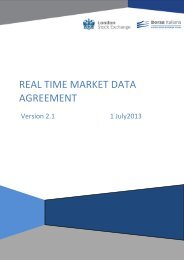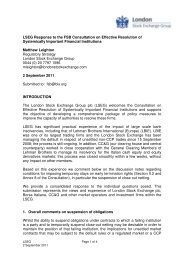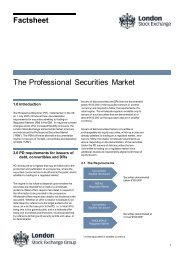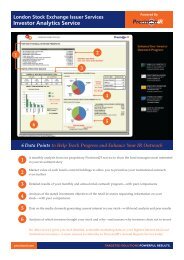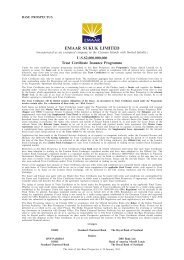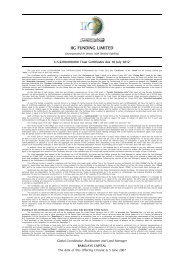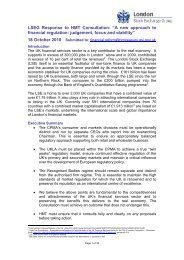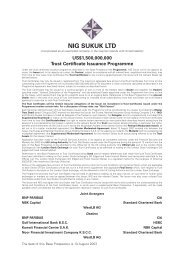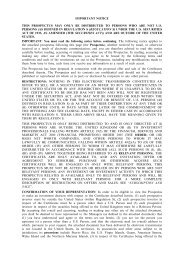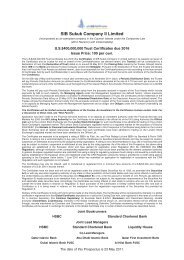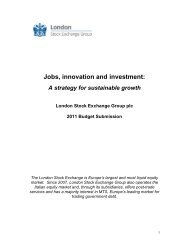I. High frequency trading (HFT) - London Stock Exchange
I. High frequency trading (HFT) - London Stock Exchange
I. High frequency trading (HFT) - London Stock Exchange
Create successful ePaper yourself
Turn your PDF publications into a flip-book with our unique Google optimized e-Paper software.
experienced in the underlying cash markets. Derivative contracts that are<br />
attractive to high <strong>frequency</strong> traders are those contracts with a large number of<br />
participants, high volatility and a high level of liquidity. Such contracts are most<br />
likely to be Index Future contracts, and will likely have tight spreads, enabling<br />
high <strong>frequency</strong> traders to get in and out of positions frequently, and achieve a flat<br />
end of day position.<br />
Currently the opinion is that as <strong>HFT</strong> makes up a small but growing percentage of<br />
market share, it does not have an adverse effect on the quality of derivatives,<br />
and is more likely to add to market liquidity with the effect of providing investors<br />
with a better price picture. However, we note that as competition increases in the<br />
derivative space and derivative markets become more fragmented, the likely<br />
increase in <strong>HFT</strong> in derivative markets could mean that we face similar issues as<br />
the equity markets have raised (as described in other sections of this paper).<br />
Not all <strong>HFT</strong> strategies are well-suited to “midpoint” dark books. For example,<br />
market making strategies cannot be employed in systems with a single reference<br />
price. Consequently, <strong>HFT</strong> strategies account for a lower proportion of dark pool<br />
<strong>trading</strong> than they do in lit markets.<br />
3. What are the key drivers of <strong>HFT</strong>, and (if any) limitations to the growth of<br />
<strong>HFT</strong><br />
The emergence of high <strong>frequency</strong> traders and <strong>HFT</strong> strategies is a natural<br />
evolution of electronic markets and also increased fragmentation of markets,<br />
which requires a certain type of customer that brings the prices across different<br />
venues back together and serves to keep them aligned (see our response to<br />
question 5).<br />
The key drivers are increased technological capacity and reduced cost (in <strong>trading</strong><br />
and post-<strong>trading</strong>). Interoperability of CCPs has allowed efficiencies in the<br />
arbitrage of different products and reduced the cost of putting those arbitrage<br />
strategies in place. As <strong>trading</strong> and associated post-trade costs fall, previously<br />
unprofitable <strong>trading</strong> strategies become marginally profitable, as the capturing of<br />
ever-smaller price movements in stocks becomes viable. For such strategies to<br />
generate meaningful returns, they must be executed in high volume, and to<br />
control risks, positions are not typically held for a long time. Hence <strong>HFT</strong><br />
strategies will represent a higher proportion of market volumes as the costs of<br />
<strong>trading</strong>, particularly in post trade, reduce further.<br />
See Q8 for our view on how we see <strong>HFT</strong> developing in Europe.<br />
4. In your view, what is the impact of high <strong>frequency</strong> <strong>trading</strong> on the market,<br />
particularly in relation to:<br />
5



